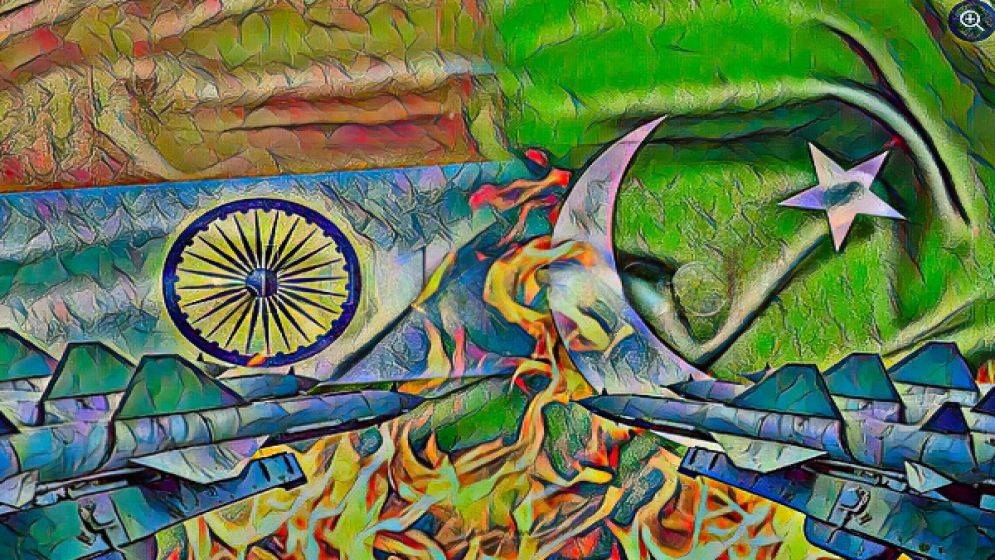How India’s offensive gamble backfired… and strengthened Pakistan’s hand

The recent military flare-up between India and Pakistan may have been brief, but its political aftershocks have been anything but.
While the border has seemingly quieted under the weight of a rushed ceasefire, the domestic landscapes in both nations have been upended–and in ways few would have predicted.
The biggest surprise? Pakistan’s embattled establishment–under siege just weeks ago–has emerged from the crisis not weakened, but emboldened.
In a deft pivot, the country’s power brokers managed to transform a moment of deep domestic vulnerability into one of strategic consolidation.
In India, however, the view from New Delhi is less flattering. What was meant to be a muscular demonstration of resolve by Prime Minister Narendra Modi’s government now looks more like a geopolitical miscalculation.
India stands diplomatically adrift, having squandered a critical opportunity to isolate Pakistan over alleged state-sponsored terrorism and assert its regional leadership.
Just before the confrontation, Pakistan’s establishment was wobbling. The February 2024 general elections, marred by accusations of manipulation, had sparked an unprecedented backlash.
Despite a hostile legal and administrative environment, candidates aligned with the ousted former prime minister Imran Khan and his Pakistan Tehreek-e-Insaf (PTI) won the most seats–albeit as independents–revealing the depth of public anger and the limits of state engineering.
The resulting political standoff triggered mass protests, court challenges, and growing scrutiny of the military-intelligence nexus long seen as the country’s true power center. For Pakistan’s generals, this was unfamiliar–and dangerous–terrain.
Then came the Pahalgam massacre: a brutal terrorist attack that killed 26 civilians in Indian-administered Kashmir. India responded with a ferocity that was predictable, perhaps even rehearsed.
Fighter jets roared, missiles launched, and national television glowed with patriotic fervor. Yet what was meant to showcase strength increasingly looks like a case study in overreach.

India’s perceived
mistakes
Delhi’s muscular theatrics lacked one essential ingredient: evidence.
Without conclusively tying the attackers to Pakistani actors, the Modi government failed to rally international support. What followed was a rapid erosion of diplomatic capital–and a missed opportunity to press its case on the global stage.
Islamabad, meanwhile, played the long game.
Projecting restraint and reason, Pakistan positioned itself as the sober actor in a dangerous standoff between nuclear-armed rivals. Its messaging, echoing through Western capitals, emphasized defensive posture and the risks of escalation.
And it worked.
What should have been a moment of reckoning for Pakistan’s security establishment became, instead, a strategic reprieve. The domestic conversation shifted from accountability to patriotism. The protests waned. The courts grew quiet. The generals, once on the back foot, now stood taller.
Pakistan’s leadership, both civilian and military, capitalized on the moment with a carefully orchestrated campaign of restraint. Emphasizing national unity and the need for peace, Islamabad struck a tone that resonated with a jittery international community wary of a nuclear confrontation.
India’s actions–however defensible from a domestic security standpoint–appeared to many observers abroad as unnecessarily belligerent, even reckless. In the court of global opinion, optics matter. And New Delhi lost that battle.
Diplomatically, the fallout was immediate and telling. Instead of lining up behind India, major powers issued cautious, equivocating statements. The United States, the European Union, and even traditionally sympathetic Gulf partners called for "restraint on both sides"--a rhetorical balancing act that, while diplomatically neutral, carried a sting.
For India, this amounted to an implicit rebuke. Its core assertion–that it was once again the victim of Pakistan-abetted terrorism–was met not with moral clarity, but with muted calls for calm.
China, ever the strategic opportunist, meanwhile played its hand subtly but effectively.
Having recently upgraded Pakistan’s air force with advanced fighter jets, Beijing used the crisis to position Islamabad as a force for regional stability.
Publicly, it called for de-escalation. Privately, it encouraged Pakistan to lean into its newfound posture as a responsible power–a role Islamabad embraced eagerly, especially when doing so meant showcasing Chinese hardware as a symbol of modern deterrence.
For New Delhi, the diplomatic math simply didn’t add up. Efforts to internationalize its grievance–via backchannels and strategic media outreach–fell flat.
Instead of Pakistan being cast as the regional arsonist, it was India that found itself increasingly portrayed as the pyromaniac in the room.
The narrative had shifted. The world stopped talking about terrorism in Pahalgam and started worrying about regional war.
From Washington to Brussels to Riyadh, the prevailing concern became escalation between two nuclear states–not the question of who lit the fuse.

Pivot in the prevailing narration
It was a damning strategic reversal.
What should have been India’s moment to rally international condemnation became a cautionary tale in diplomatic overreach. The cost? A weakened narrative, a diminished standing, and a sense that India, not Pakistan, was the actor in need of constraint.
Meanwhile, across the border, the crisis provided Pakistan’s establishment with the perfect cover to reassert its dominance. With the military recast as the indispensable guardian of national sovereignty, its authority was reaffirmed in full public view.
The courts quieted. The media shifted focus. The street protests faded. What began as a governance crisis ended as a patriotic reawakening, carefully stage-managed from Rawalpindi.
The wave of public outrage over the rigged February elections, military interference, and the erosion of democratic norms was swiftly overtaken by a chorus of unity and deference. The ceasefire–brokered swiftly with the help of third-party interlocutors including the United States–was spun not as a diplomatic triumph. Restraint was the new rhetoric. Balance, the official line.
For an establishment grappling with what may have been its gravest legitimacy crisis in over a decade, the optics could not have been more favorable.
The military, long portrayed as the shadow power behind Pakistan’s faltering democracy, was now front and center–but this time as the calm custodian of national honor.
Not only had it stopped short of full-blown war, it had done so while preserving territorial integrity and, according to the prevailing domestic narrative, forcing a nuclear-armed adversary to back off.
What makes this outcome all the more remarkable is that Pakistan achieved it without posturing or provocation. It was New Delhi–through its bellicose rhetoric, rapid military mobilization, and ham-fisted diplomacy–that inadvertently handed Islamabad the high ground.
In attempting to apply pressure through international condemnation, India managed instead to burn its own diplomatic capital, breathing new life into the very institutions it sought to expose.
That does not, of course, absolve Pakistan of long standing grievances.
India’s concerns are not without merit. The Pahalgam attack was a brutal act of terror, and Islamabad’s history of harboring or tolerating cross-border militant groups remains a festering wound in regional relations.
But legitimate grievances require calibrated responses–not impulsive escalation.
New Delhi’s critical misstep was to turn a terrorist strike into a strategic liability. By allowing the situation to spiral into a potential regional flashpoint, India lost control of the narrative–and the initiative.
What could have been an opportunity for smart diplomacy, coalition-building, and targeted pressure instead morphed into a short, sharp conflict that left India strategically adrift and diplomatically isolated.
—
Md Sazzad Amin is an entrepreneur and an armchair political analyst

